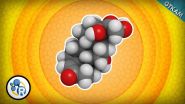(Press-News.org) Passive exposure to bleach in the home is linked to higher rates of childhood respiratory and other infections, suggests research published online in Occupational & Environmental Medicine.
Although modest, the results are of public health concern in light of the widespread use of bleach in the home, say the researchers, who call for further more detailed studies in this area.
The researchers looked at the potential impact of exposure to bleach in the home among more than 9000 children between the ages of 6 and 12 attending 19 schools in Utrecht, The Netherlands; 17 schools in Eastern and Central Finland; and 18 schools in Barcelona, Spain.
Their parents were asked to complete a questionnaire on the number and frequency of flu; tonsillitis; sinusitis; bronchitis; otitis; and pneumonia infections their children had had in the preceding 12 months. And they were asked if they used bleach to clean their homes at least once a week.
Use of bleach was common in Spain (72% of respondents) and rare (7%) in Finland. And all Spanish schools were cleaned with bleach, while Finnish schools were not.
After taking account of influential factors, such as passive smoking at home, parental education, the presence of household mould, and use of bleach to clean school premises, the findings indicated that the number and frequency of infections were higher among children whose parents regularly used bleach to clean the home in all three countries.
These differences were statistically significant for flu, tonsillitis, and any infection.
The risk of one episode of flu in the previous year was 20% higher, and recurrent tonsillitis 35% higher, among children whose parents used bleach to clean the home.
Similarly, the risk of any recurrent infection was 18% higher among children whose parents regularly used cleaning bleach.
This is an observational study, so no definitive conclusions can be drawn about cause and effect. Furthermore, the authors highlight several caveats to their research.
For example, they didn't have any information on the use of other cleaning products used in the home, and only basic information was gathered on the use of bleach in the home, making it difficult to differentiate between exposure levels.
But their findings back other studies indicating a link between cleaning products and respiratory symptoms and inflammation, they say.
And they add: "The high frequency of use of disinfecting cleaning products, caused by the erroneous belief, reinforced by advertising, that our homes should be free of microbes, makes the modest effects reported in our study of public health concern."
By way of an explanation for the associations they found, they suggest that the irritant properties of volatile or airborne compounds generated during the cleaning process may damage the lining of lung cells, sparking inflammation and making it easier for infections to take hold. Bleach may also potentially suppress the immune system, they say.
INFORMATION:
Highlights
High parathyroid hormone levels and subsequent bone loss are major risk factors for worsening of coronary artery calcification in patients on dialysis.
Washington, DC (April 2, 2015) -- Bone loss may be a sign of poor heart health in patients on dialysis, according to a study appearing in an upcoming issue of the Journal of the American Society of Nephrology (JASN). Monitoring bone loss in dialysis patients may therefore provide an early alert to physicians concerning cardiovascular problems.
Most patients with chronic kidney disease who are on dialysis ...
Using archival data from the Japan-led Suzaku X-ray satellite, astronomers have determined the pre-explosion mass of a white dwarf star that blew up thousands of years ago. The measurement strongly suggests the explosion involved only a single white dwarf, ruling out a well-established alternative scenario involving a pair of merging white dwarfs.
"Mounting evidence indicates both of these mechanisms produce what we call type Ia supernovae," said lead researcher Hiroya Yamaguchi, an astrophysicist at NASA's Goddard Space Flight Center in Greenbelt, Maryland. "To understand ...
Boston, MA - Harvard T.H. Chan School of Public Health researchers are calling upon police in all states to improve their reporting of crashes involving vehicles and bicycles, according to a new study being published Thursday, April 2, 2015. Currently, details on crashes are handwritten by police on paper and there are few bicycle-relevant codes. The researchers are calling for police to use electronic tablets that would include more options to gather bicycle-specific data, such as drawings of the scene and additional codes that could indicate, for example, if the bicyclist ...
LOS ANGELES -- Using herpesvirus, molecular immunologists from the University of Southern California (USC) Norris Comprehensive Cancer Center have discovered a cellular process that activates a critical immune defense against pathogens, which could have implications for developing drugs to bolster one's immunity to infection. Some herpesvirus infections lead to cancer.
Led by Pinghui Feng, Ph.D., associate professor of molecular microbiology and immunology at the Keck School of Medicine of USC, the team found that herpesvirus proteins activate retinoic acid-induced gene ...
DURHAM, N.C. -- The saying "what doesn't kill you makes you stronger" may not hold up to scientific scrutiny. Baboons born in times of famine are more vulnerable to food shortages later in life, finds a new study.
The findings are important because they help explain why people who are malnourished in early childhood often experience poor health as adults.
After the plains of southern Kenya experienced a severe drought in 2009 that took a terrible toll on wildlife, researchers at Duke and Princeton Universities looked at how 50 wild baboons coped with the drought, and ...
CORVALLIS, Ore. - Engineers have combined innovative optical technology with nanocomposite thin-films to create a new type of sensor that is inexpensive, fast, highly sensitive and able to detect and analyze a wide range of gases.
The technology might find applications in everything from environmental monitoring to airport security or testing blood alcohol levels. The sensor is particularly suited to detecting carbon dioxide, and may be useful in industrial applications or systems designed to store carbon dioxide underground, as one approach to greenhouse gas reduction.
Oregon ...
Methicillin-resistant Staphylococcus aureus (MRSA), an antibiotic-resistant superbug, can cause life-threatening skin, bloodstream and surgical site infections or pneumonia. Researchers at the University of California, San Diego School of Medicine now report that cigarette smoke may make matters worse. The study, published March 30 by Infection and Immunity, shows that MRSA bacteria exposed to cigarette smoke become even more resistant to killing by the immune system.
"We already know that smoking cigarettes harms human respiratory and immune cells, and now we've shown ...
(SACRAMENTO, Calif.) -- The micro RNA miR-22 has long been known for its ability to suppress cancer. However, questions remain about how it achieves this feat. For example, which molecules are regulating miR-22, and which are miR22 targets?
Researchers at UC Davis have unraveled some of these relationships, identifying several interactions that directly impact liver and colon cancer. The work provides new insights into how miR-22 operates and could potentially lead to new cancer therapies. The study was published in the Journal of Biological Chemistry.
"There are quite ...
WASHINGTON, April 2, 2015 -- It's supposed to help keep our bodies healthy in stressful situations. But the constant stress of our everyday lives means we're getting overexposed to cortisol. Raychelle Burks, Ph.D., explains why too much cortisol is bad for you in the latest episode of the Reactions series Get To Know A Molecule. Check it out here: https://youtu.be/fPnDaRYXHs4.
INFORMATION:
Subscribe to the series at http://bit.ly/ACSReactions, and follow us on Twitter @ACSreactions to be the first to see our latest videos.
The American Chemical Society is a nonprofit ...
For more than 50 years, scientists thought that the horned anole lizard -- sometimes called the "Pinocchio Lizard" for its long, protruding nose -- was extinct. But it turns out this is a tall tale.
Scientists re-discovered the lizard in 2005, living elusively at the tops of tall trees in the cloud forests of Ecuador -- the only place in the world that it is known to exist.
A team led by a Virginia Tech scientist recently uncovered new information about the role that the lizard's long nose plays. Only the males have long noses, and they appear to be used in social ...



